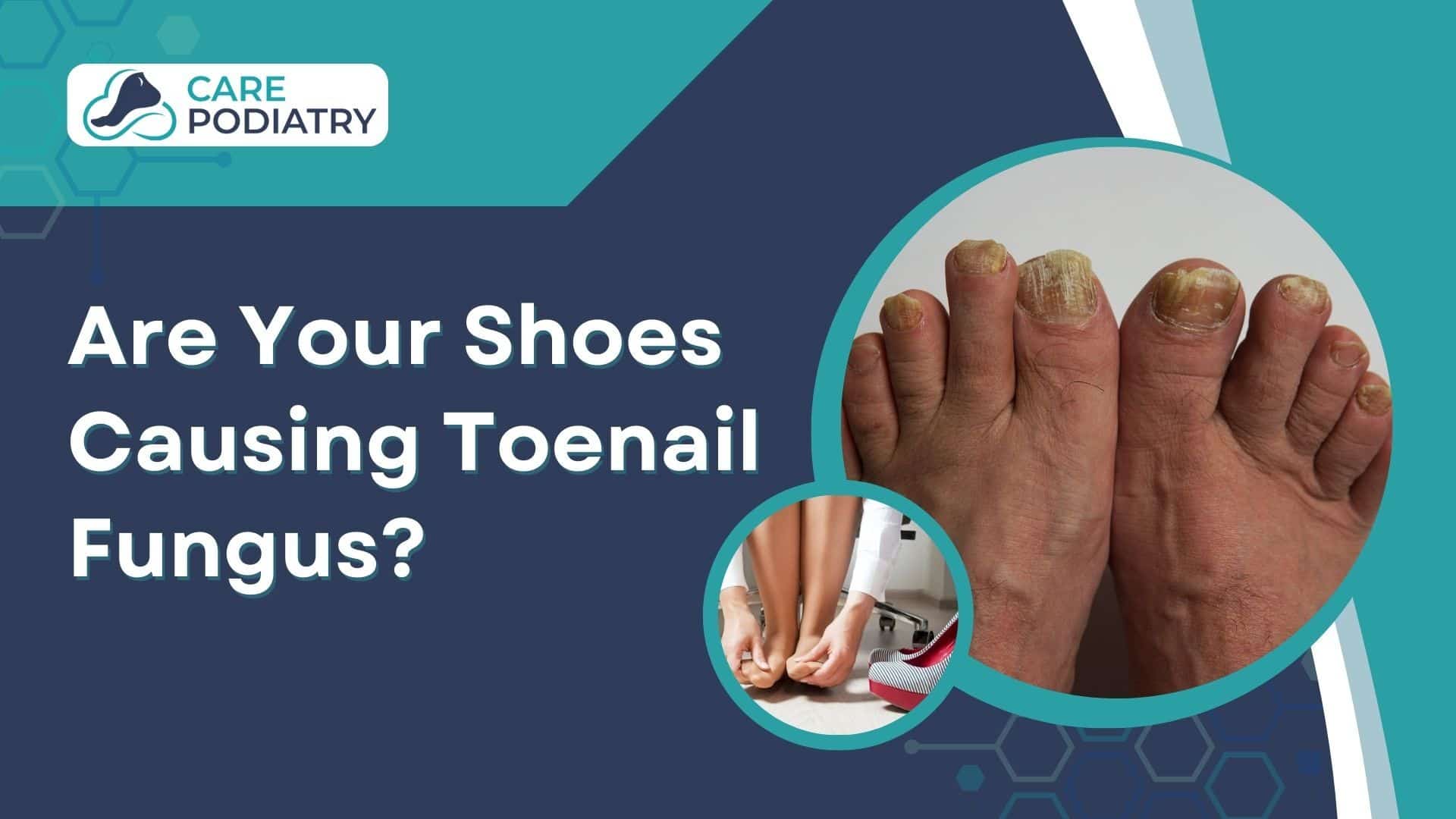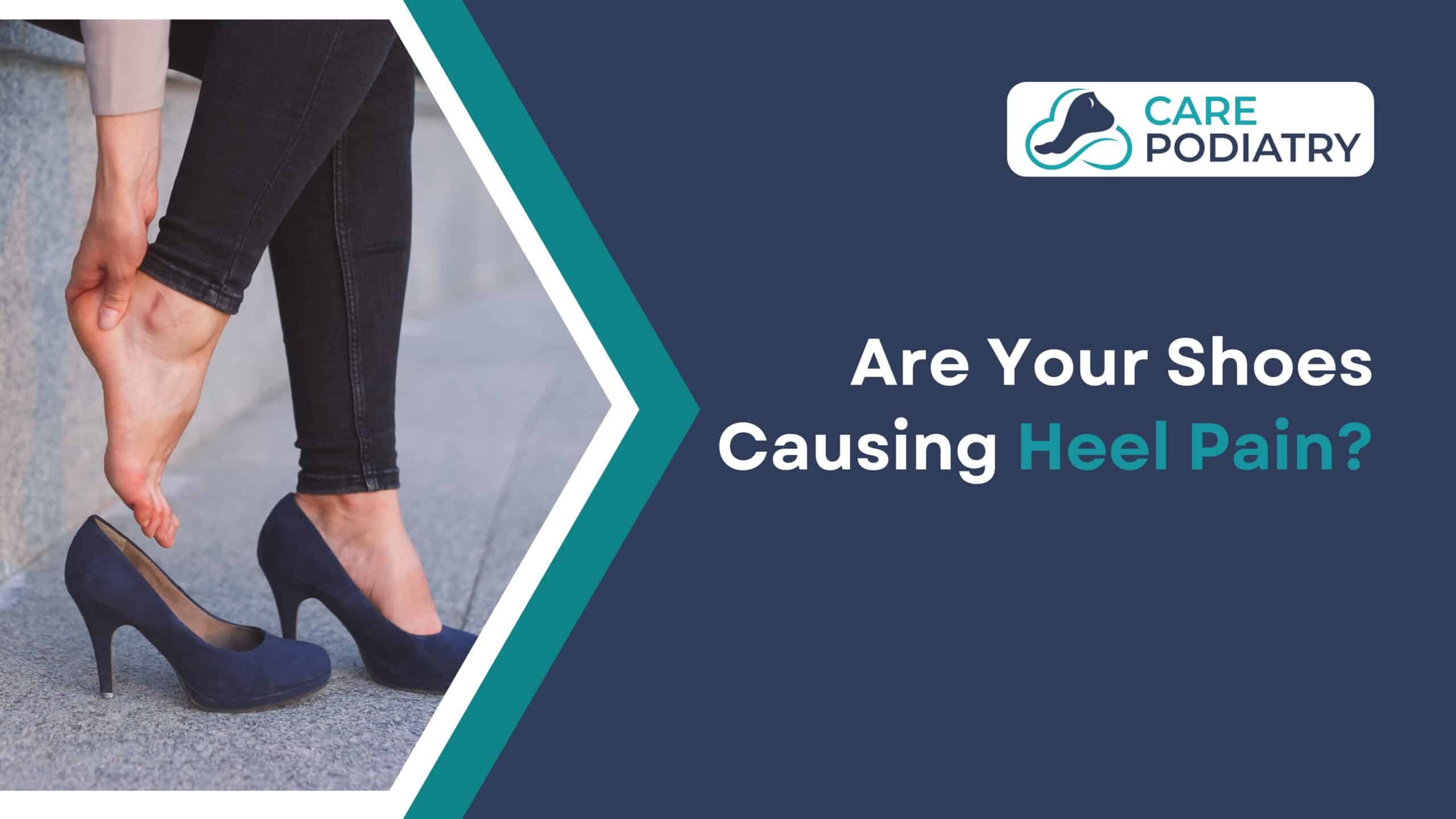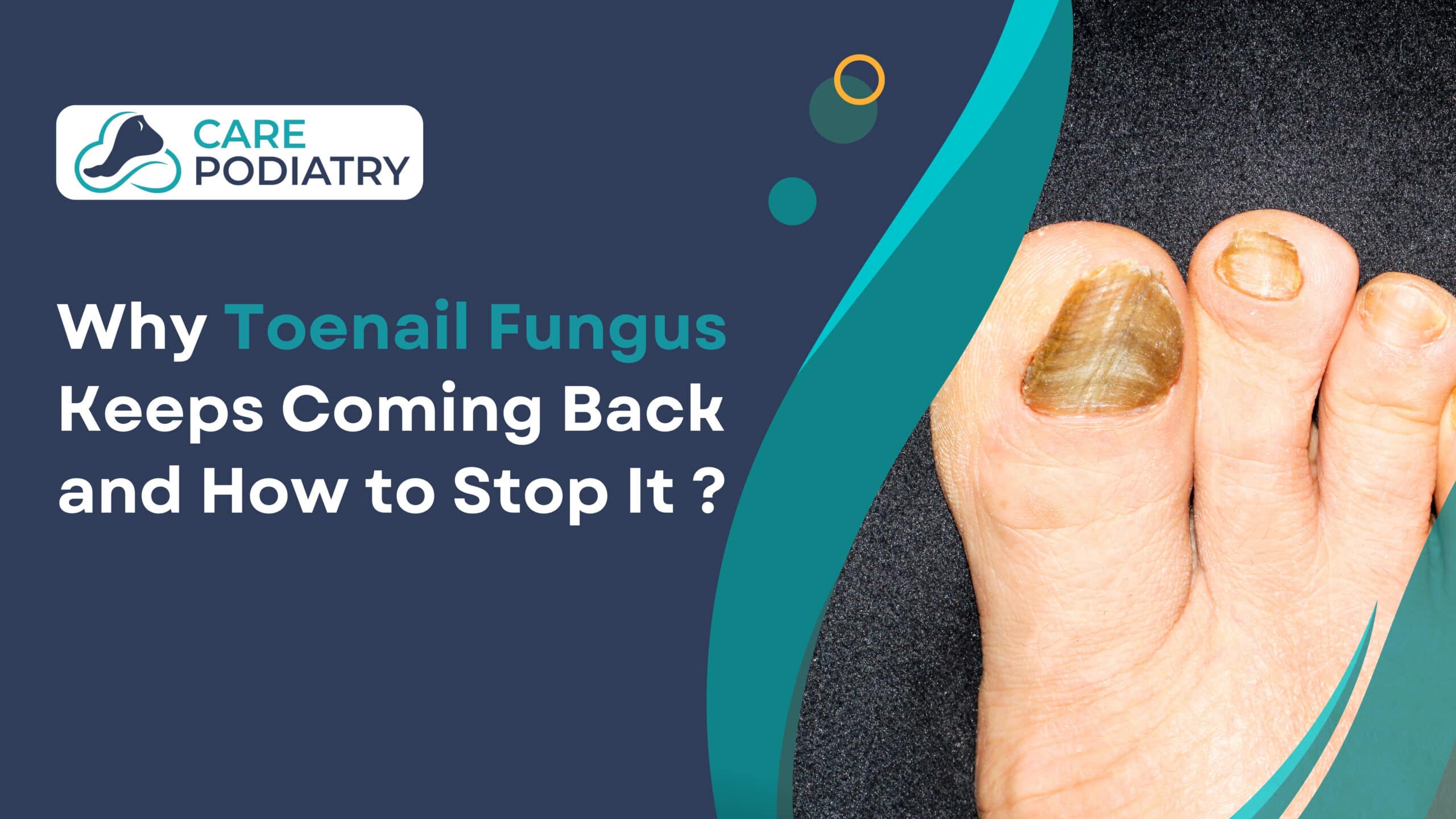Your shoes are meant to protect your feet, but in some cases, especially when it comes to avoiding fungal infections, you also need to protect your feet from your shoes!
Unfortunately, fungal infections are rather prevalent. Fungal spores, which are so tiny that we cannot even see them, are present everywhere. Since these microscopic organisms are difficult to avoid, it is crucial to take precautions against infection, particularly by shielding your feet from shoes that are infested with fungus.
Do Shoes Cause Toenail Fungus?
Fungi are known to thrive in warm, humid conditions. Despite not being one of the most evident effects of bad shoe selections, toenail fungus is one of the most prevalent. Given that fungi thrive in damp environments, it should come as no surprise that shoes and socks offer the perfect environment for fungal growth. For instance, it’s a clear invitation for fungi to grow if you exercise in the morning and spend the rest of the day in tight, sweaty shoes and socks.
Toenail fungus frequently appears following a fungal skin infection, such as athlete’s foot. Your immune system’s defenses against the invasive fungi are ineffective in your feet and toes due to their poor blood supply.
Avoid wearing these shoes for too long to avoid toenail fungus:
- Tight activewear shoes
- Leather shoes
- Shoes with a furry insole
- High heels with a peep toe
- Work shoes/boots
- Pumps
Try to wear open-toe shoes to keep the air flowing between the toenails. The fabric of your shoes should be breathable. Consider wearing thin shoes made from mesh and those that are waterproof.
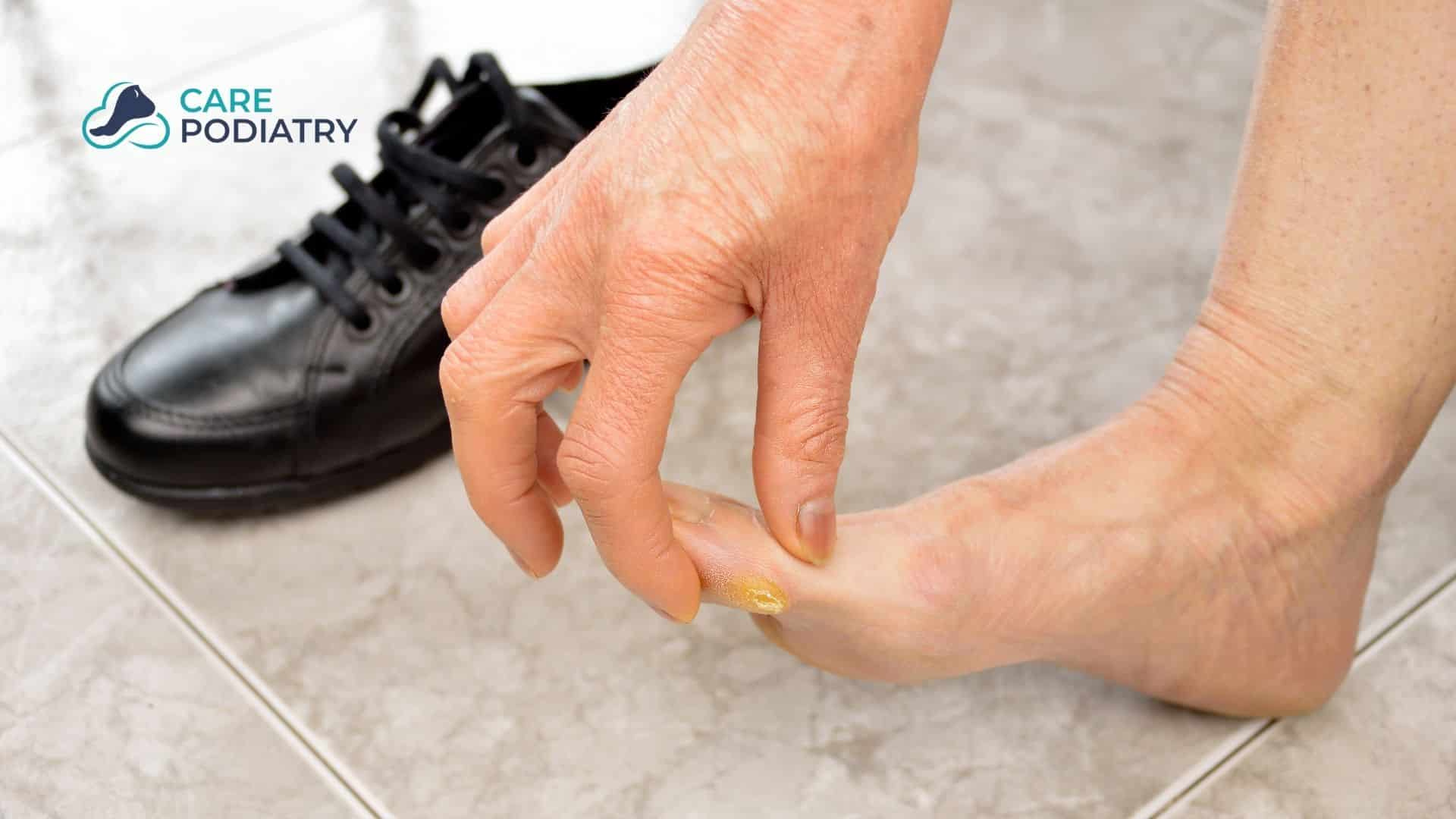
What Effect Does Your Shoe Type Have on Recovery Time?
When you initially get a fungal infection, you should clean any recently used shoes you own using an over-the-counter medication that contains antifungal characteristics. This will stop the infection from spreading further and reinfecting the toenails in the future.
Wearing non-restrictive shoes lets your feet breathe, preventing your skin from becoming constrained and allowing moisture to accumulate and spread the illness. Your feet will stay dry since loose-fitting shoes will increase airflow around them. This will help your toenails recover quickly.
What are the Other Causes of Toenail Fungus?
A live fungus is the source of a fungal nail infection. Although yeast and molds can also cause toenail infections, dermatophytes are the most prevalent type of fungus.
In addition to spreading from nail to nail on your own feet, toenail fungus can also infect other people through contact. It can be encountered in public areas where individuals are barefoot, such as gyms, nail salons, and swimming pools. Toenail fungus can also develop as a result of circulation issues and a weakened immune system.
You may be especially vulnerable to toenail fungus if you have diabetes, issues with blood circulation, or nerve damage in your feet. In addition to making you feel self-conscious about the way your thick, brittle, yellowish nails look, an untreated toenail fungus can cause excruciating pain and irreversible nail destruction.
Toenail fungus symptoms include:
- Crumbly, brittle, or thick nails
- Distorted toenails
- Brown or yellow discoloration
- A dark patch of dirt accumulation beneath your nail
- Odor of unpleasant feet
How To Get Rid of Toenail Fungus?
It takes time for nail fungus to disappear. Additionally, it may worsen and cause pain when you walk if you don’t address it. Additionally, it could spread throughout your body or to other nails.
Fortunately, there are several methods for taking care of it.
Prescription Remedies for Toenail Fungus
Sprays, creams, and gels such as ciclopirox, efinaconazole, and tavaborole are among them. Because the products don’t pierce your nail bed, they work best for surface fungus. Before you see the fungus disappear, you might need to use it every day for a year. To enable the product to get deeper into your nail, your podiatrist will probably cut and file away your nail’s dead layers.
To confirm that it is indeed a fungus and to identify its type, they might also remove a sample of your nail and send it to a lab.
They may recommend antifungal medications like terbinafine and itraconazole. Although you typically take them for 12 weeks, it may take 10 months or more for the fungus to entirely disappear. Despite the high success rates of these pills, your doctor must keep an eye on you while you take them because itraconazole might interact poorly with other prescriptions, and terbinafine can harm your liver. They have adverse effects as well, like vomiting, nausea, and headaches.
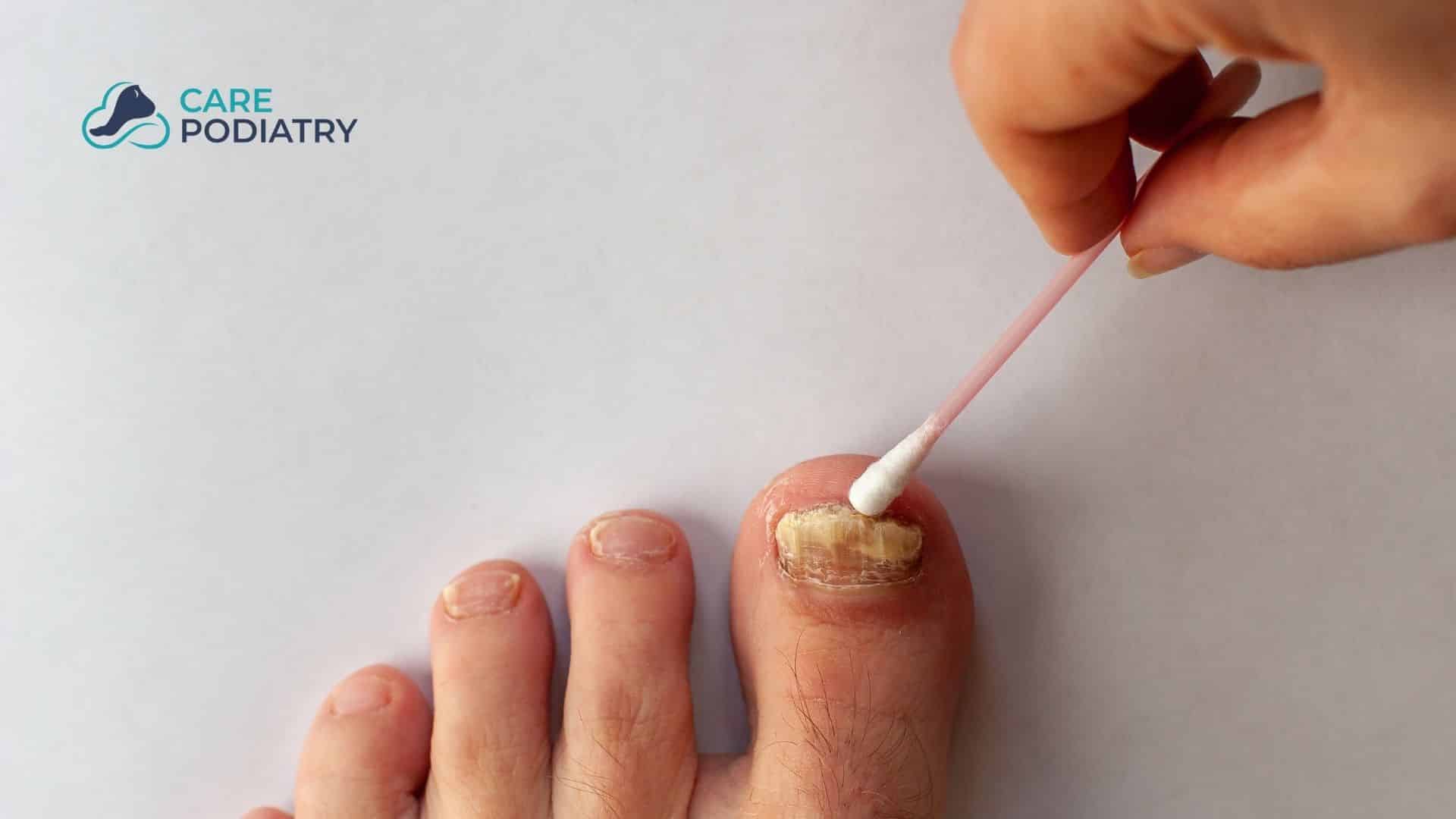
Nail Removal
Your doctor might want to remove a portion or all of your nail if the infection is deep and has been there for a long time. Both surgical and nonsurgical methods can be used to remove your nail. Your doctor will apply urea ointment to the affected nail surface and cover it with tape and plastic as a nonsurgical treatment. The nail bed is made softer by the ointment. After roughly ten days, your doctor can either cut off the diseased portion of the nail or remove the infected nail from the nail bed.

Advanced Laser Therapy
The most effective method for removing the unattractive appearance caused by toenail fungus and getting your feet back to their regular appearance is laser treatment. The most up-to-date laser technology is used by Care Podiatry to go beneath your toenail’s surface and eradicate the fungus without harming the surrounding tissue. There is no pain during the process, and it can be solved in a few sessions.
The fungus beneath your nails will be totally eradicated and prevented from growing with laser treatment. Your nail will revert to its initial, healthy, natural, and transparent look after it has grown out.
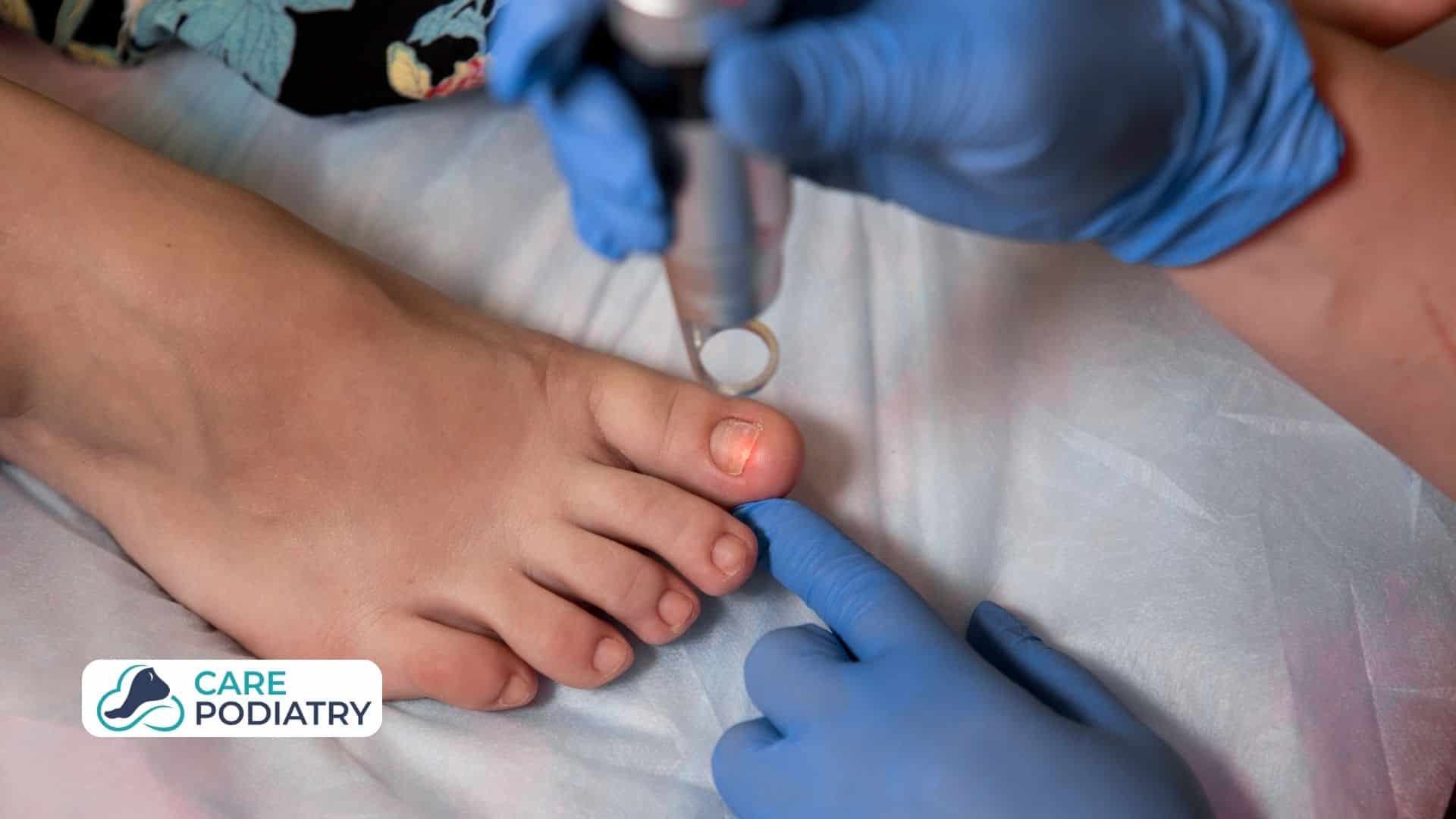
Conclusion
It’s critical to treat toenail fungus as soon as possible to prevent further infection. A fungal nail infection can damage and discolor your nails, spread to other parts of your foot, and even cause discomfort and an unpleasant odor as you walk if it persists. In severe situations, the toenail may need to be removed.
Thankfully, the majority of toenail fungus instances are fairly common and easily curable, particularly if caught early. Make an appointment with Care Podiatry right now to get help solving this bothersome issue. Your fungus will disappear, and your nails will return to their natural appearance before you realize it.
Frequently Asked Questions
How Can Toenail Fungus Be Prevented?
Although it can be difficult to avoid toenail fungus if you are in the wrong place at the wrong time, generally speaking, maintaining proper hygiene can help prevent an infection. When your feet are wet, try to dry them off. If you’re in a wet public place, use flip-flops to keep your feet from touching anything that can be infected or dirty. Remember to wash your feet after going barefoot in a public place if you don’t have shoes or flip-flops.
What Are the Benefits of Laser Nail Treatment?
The most effective method for removing the unattractive appearance caused by toenail fungus and getting your feet back to their regular appearance is laser treatment. Without causing any harm to the surrounding parts of the toe or nail, the laser eliminates the fungus beneath the surface of your toenail.
If I have toenail fungus, do I have to discard my shoes?
Throw away any boots, shoes, skates, or other footwear you wore prior to beginning therapy if you have just finished treating nail fungus. Every time your socks start to perspire, put on a fresh pair.
Is it better to go barefoot with toenail fungus?
We strongly advise you to always wear at least a pair of socks. Your fungus-infected toes could easily spread to the person beside you. Wearing shower shoes till your infection goes away would be beneficial.
Will my toenail go back to normal after the fungus?
It may take six to eighteen months for its appearance to return to normal. However, in some cases, the nail does not recover to the same appearance as before.

